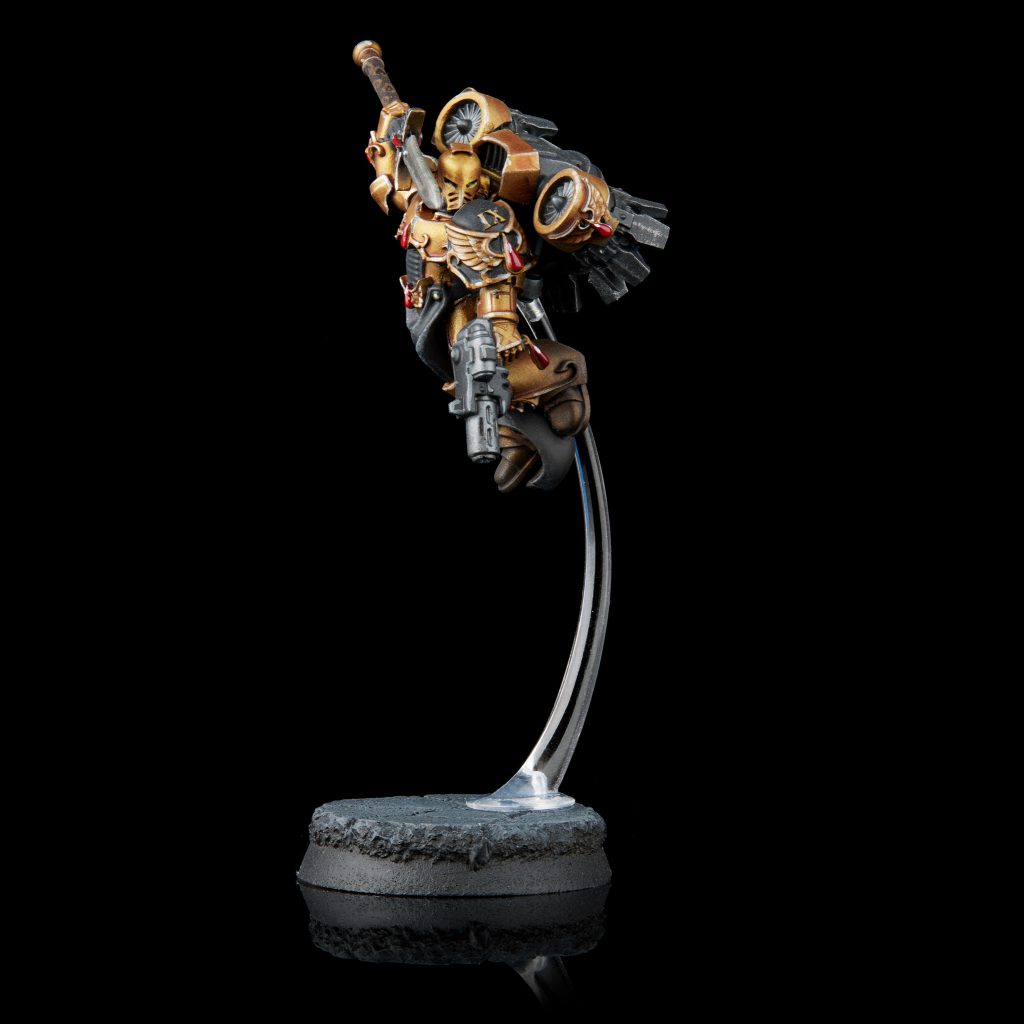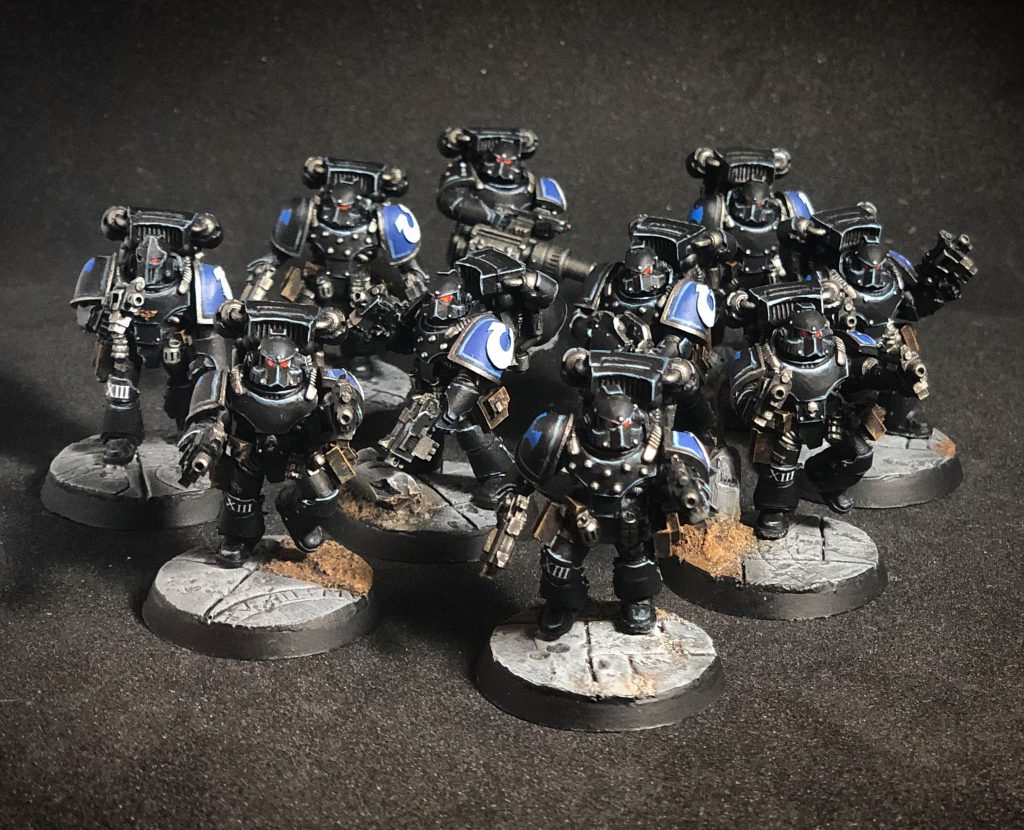Welcome to Horus Heresy Tactica, our series that provides a deep dive in a specific mechanic, interaction or aspect of play in Warhammer: the Horus Heresy.
We’re going to take a slightly different approach in this instalment of Tactica – instead of looking at how to best use and assess a specific aspect of the game, we’re just going to look at how a part of it works. The reason for this is that the assault phase is probably the phase players most commonly run into problems with, and it’s worth it to do an overview of just how it works, highlight the places where it’s easy to make mistakes, and also have a look at the many many many special rules that can play into it.
We’re going to do this in a series of three articles. Today we’ll be looking at Charges and how they work and how you can run into problems with them. Next time we’ll dive into the Fight phase and how that can be played to your advantage. Finally we’ll take a look at Challenges, and the weird rules that govern them as well as when to issue and accept them.
These articles are dedicated to Liam “Corrode” Royle, who decided he would just understand how the assault phase worked from vaguely remembered rules for 5th edition Warhammer 40,000, and managed to get almost every aspect of it entirely wrong. Here’s to you, champ.
Charging the Complexity
Of all the phases the Assault phase is probably the most complex, and is in fact so complex it’s divided up into two sub-phases (charge and fight)… but even that’s not the full story, because a shocking amount of what in the rule book is filed away under morale actually takes place in this phase.

Let’s focus then, first of all, at the Charge phase. In this sub-phase you’re going to nominate units, one at a time, and declare charges with them, fully resolving each charge before moving onto the next. But what units can actually charge? The core rulebook lists a good rundown of reasons a unit might not be able to charge on page 180:
- The unit is not within 12″ of a target unit: not actually on their list, but mentioned repeatedly on the same page, you can’t charge something that’s not within maximum range of a charge. The maximum distance you can declare a charge to is always 12″ though, and that’s important when you consider some units can actually charge further than this (thanks to various bonuses, mostly from high Movement), or less than this.
- The unit has been Pinned: pinning ruins units, and this is one of the reasons why. No charges for you.
- The unit has already Charged in this Phase and is now locked in combat: despite the qualifier at the end of this sentence, you can’t declare charges again and again with the same unit, because the process is once you’ve resolved the charge you pick another unit and have it try a charge. This should just be “locked in combat” and I don’t understand why “charged in this phase” is included – if you’re locked in combat you can’t charge no matter when the charge happened.
- The unit attacked with Rapid Fire weapons, Ordinance weapons or Heavy weapons in the Shooting phase: these just lock you out of firing completely. Not much more too it… unless you have Relentless or a similar special rule that says this is fine, actually. So terminators can absolutely fire their combi-bolters and then charge, or whatever, because that special rule specifically allows it.
- The unit is Falling Back: oddly you can’t run away from the enemy into glorious combat with them.
- If a unit makes a shooting attack in the shooting phase it can only charge the unit it shot at: this includes if you have a rule like relentless, and also when using pistol and assault weapons as normal. One important caveat is that this is specifically making shooting attacks, not performing actions in the place of shooting attacks. So if you use a psychic power instead of a shooting attack that targets an enemy unit, you’re not locked into charging that unit (unless there were other models in the unit that did shoot, of course).
Once declared, your opponent needs to React if they want to – this is when assault phase reactions are declared, but not resolved. Instead, now the player launching the assault rolls the dice for the assault (2d6 with any modifiers) and then the reaction is resolved. Why? It’s unclear, but that’s when it happens. There are variety of modifiers that can apply to this roll, but the big one is movement speed. Very slow units (units with less than Movement 5) get a -1, then a +1 for 8-10, a +2 for 11-12 and a +3 for 13 or more. This can make a really big difference and is one of the major reasons that Assault Squads are very worthwhile – that +2 to charges is a huge deal. It also makes Knights very scary, as they often get a +3 to their charges.
There are other modifiers of course, but one that’s not technically a modifier that deserves a look at is the Alpha Legion special rule. This makes units count as 2″ further away, it doesn’t modify your charge distance. This means that an Alpha Legion unit more than 10″ away by the tape measure cannot have a charge declared against it, because it counts as being more than 12″ away and thus out of charge range. If by the tape a unit is 7″ away you need a 9 on your charge for it to succeed, but if you make it you then get to move the full 9″. It’s an extremely weird rule to get your head around, but just think of it as your unit isn’t being modified, the target unit is.
When any reactions have been resolved, move the models and you need at least one ending engaged (in base contact) for it to be successful. If you fail you instead perform a surge move, moving towards the unit half the distance rolled (rounded up). If you charge through difficult terrain then you’re going to have a bad time in the following combat, but you don’t actually go any slower (but you do roll for dangerous terrain as normal).
Update: As some helpful commenters have pointed out, this is up for some debate! It seems likely that actually you do move slow (-2 to the roll) but the language is a little all over the place and the only time it states it outright is in an example. Probably best, all told, to reduce those charge distances accordingly.

One last complication to consider: charging multiple units. If you want to charge and engage several units in the same charge you have to declare it when you declare the charge. You pick a primary target for the charge (the unit you’re mostly aiming at), move the initial charger and that’s what determines if the charge succeeds or fails. You also declare any number of secondary targets (that are within 12″) and then move the other models in the charge to engage the primary or second targets as best you can, keeping in coherency. If you declare a charge multiple units even if you don’t end up engaged with more than the primary target then the charge is disordered (we’ll come onto that). The rules on reactions for multiple unit charges are a little vague, but it doesn’t seem like there’s anything stopping all of the units being charged from reacting if the player has the reaction allocation to blow through, so be warned.
Once you’ve resolved the charge, move onto the next charging unit and do it all over again. Once you’ve done all the charges, the charge sub-phase is done and it’s ready to 3…2…1… Fight!
Conclusion
Charging is just the first step to pushing someone’s face in, but it’s an important one. Units that can seem relatively expensive for their points suddenly rocket in value when you realize they’re much more likely to get into combat, and charging multiple units is a mire that you need to navigate carefully. Next time we’ll look at the fight sub-phase and how that works!


